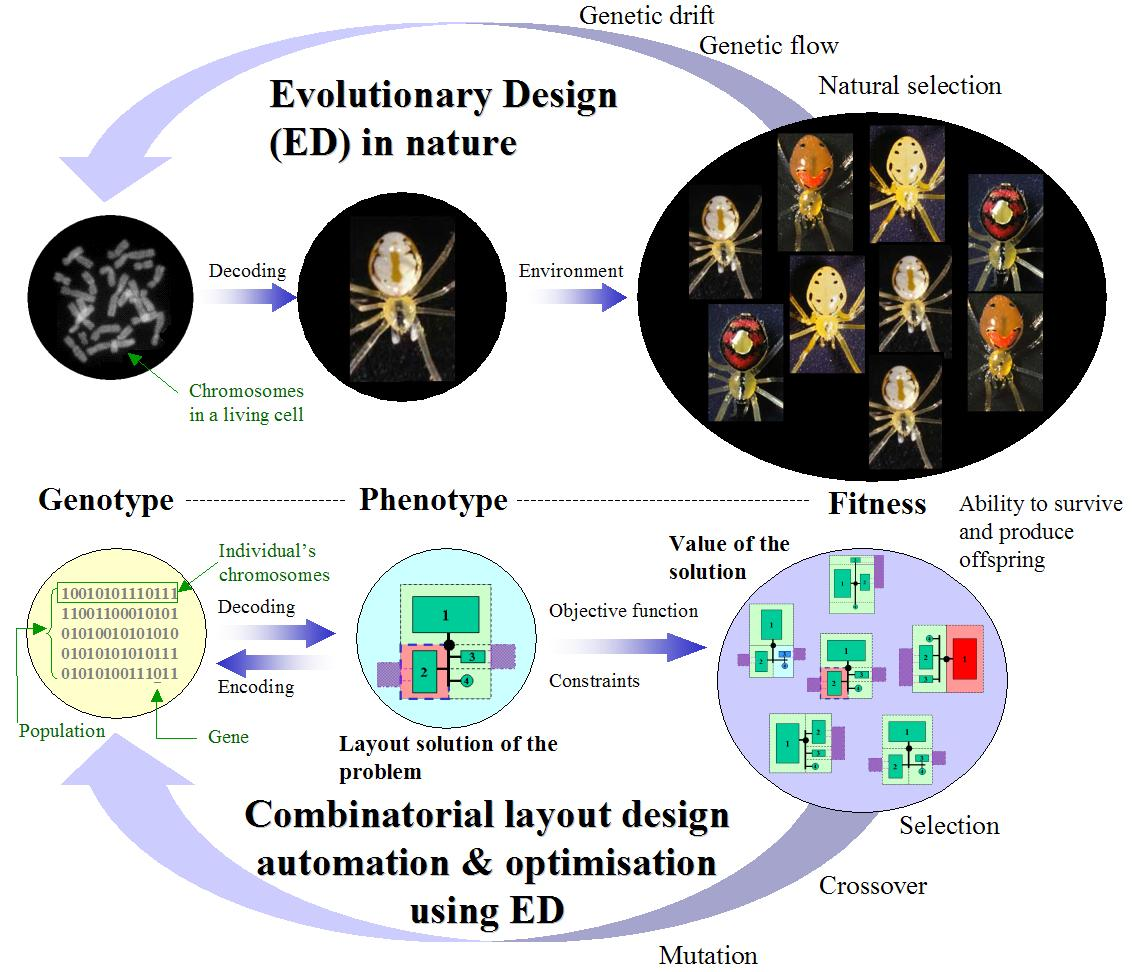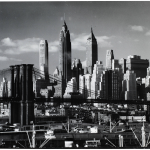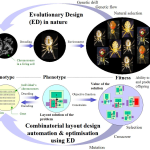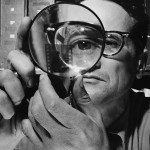Evolutionary design is an intriguing concept that explores the intersection of form and function, revealing how design itself evolves over time. Through the striking imagery captured by Andreas Feininger for LIFE magazine, we are reminded of the profound symbolism in design, particularly when examining the beautiful bones of various species. These skeletal structures not only tell stories of life and death but also highlight the intricate design evolution inherent in nature. Much like the natural processes that shape organisms, the principles of evolutionary design encourage us to rethink our preconceptions about aesthetics and utility. As we delve deeper into this fascinating topic, it becomes evident that understanding the beauty of these forms can unlock new perspectives on both art and life.
The concept of design evolution, often regarded as the gradual refinement of aesthetic and functional elements, captivates many in the artistic community. This approach integrates ideas from nature, exemplified by the captivating photography of skeletal remains captured by Andreas Feininger, showcasing how even the most unexpected subjects can resonate with deep symbolism. By studying the elegant structures known as ‘beautiful bones,’ we can appreciate not only their visual appeal but also their significance in the overarching narrative of life. Such insights challenge our perceptions and invite us to consider how historical and evolutionary frameworks shape our understanding of design. In essence, this exploration intertwines art, nature, and the past, creating a rich tapestry that continues to influence contemporary design thinking.
The Intricate Evolution of Design
Design evolution is a dynamic and ongoing process that transcends mere aesthetics; it embodies the merging of functionality and art. This transformation can be traced through various periods and styles, each contributing to the broader narrative of human creativity. Notably, the pivotal role of natural forms in design is exemplified by Andreas Feininger’s photographic work showcasing skulls and bones. These foundational structures, often conveying both beauty and horror, remind us of the inherent links between life and death, shaping our understanding of design as a reflection of our existence.
Moreover, the relationship between design and the natural world can be further illustrated through the concept of ‘beautiful bones.’ When stripped of their purpose, bones present an intriguing study of form and structure, inviting designers to rethink how we approach materials and aesthetics. The symbolism inherent in skeletal imagery resonates deeply within the design community, inspiring works that provoke thought and emotion. This visual representation of evolution not only revitalizes design thinking but also challenges long-held perceptions of beauty and function.
Andreas Feininger: The Photographer Behind Design Symbolism
Andreas Feininger was not just a photographer; he was a visual storyteller whose work delved into the complexities of life and decay. His ability to capture the stark beauty of skeletal remains through the lens transformed our perception of mortality into an art form. Featured in LIFE magazine, Feininger’s photographs expand beyond mere aesthetics, utilizing symbolism in design that evokes a deep connection with the audience. Each image, filled with intricate details, serves as a reminder of the fragility of life and the profound stories that lie within, thus intertwining photography with the evolution of design.
Feininger’s work challenges us to find beauty in unexpected places, encouraging designers to embrace the narrative potential of their creations. By illustrating the ‘beautiful bones’ of both human and animal forms, he invites an intimate dialogue about the essence of life and the legacy we craft through our designs. These insights not only influence contemporary design principles but also push artists to explore themes of existentialism and the ephemeral nature of our creations, solidifying Feininger’s role as a pivotal figure in the history of symbolic design.
The Power of Symbolism in Modern Design
Symbolism in design offers a profound way to communicate ideas without words, tapping into shared cultural narratives and personal experiences. Designers often use graphic elements, color palettes, and forms that resonate deeply with viewers, evoking emotions and associations that shape our understanding of a product or concept. Feininger’s portrayal of skeletal forms in LIFE magazine is a prime example, where the stark symbols of life and death juxtapose ideas of beauty and mortality, compelling viewers to reflect on the deeper meanings behind what they see.
Incorporating symbolism into design extends beyond aesthetic choices; it creates a language that speaks to the audience’s subconscious. Modern designers can draw on historical symbols or reinvent them to fit contemporary contexts, enriching their storytelling. As with Feininger’s work, where every bone tells a story, today’s designers are encouraged to consider how symbolic elements can enhance their visual messages, creating a more immersive experience that resonates across diverse audiences and explores the themes of life’s evolution.
Exploring the Aesthetic Appeal of Bones in Design
The aesthetic appeal of bones in design showcases a visceral connection between function and form, where brutal beauty meets meticulous craftsmanship. As noted in Feininger’s evocative photographs, the raw structure of bones creates an intricate texture that designers can harness. This allure lies not only in the starkness of the skeletal motifs but also in their capacity to symbolize life’s fragility and resilience. By integrating skeletal forms into design work, artists can evoke feelings of nostalgia and reflection, illustrating the continuing impact of evolution on our aesthetic sensibilities.
Furthermore, the use of such natural forms invites conversations around the boundaries of design. Are we merely observers of beauty or active participants in this cycle of creation and decay? Embracing the aesthetic qualities of bones can challenge designers to rethink their choices by promoting themes of sustainability and ecological awareness. In this way, the design evolution aligns with nature’s inherent cycles, blending artistry with a narrative that emphasizes the importance of our connection to all living beings, thus enriching the visual landscape we inhabit.
The Legacy of LIFE Magazine Photography in Design
LIFE magazine has left an indelible mark on the world of photography and design, celebrating the artistry of visual storytelling. The publication’s commitment to capturing poignant moments, such as those by Andreas Feininger, has fostered a unique appreciation for form and structure within the context of design. This legacy extends beyond journalism; it influences how designers perceive and approach the world, integrating lessons learned from these iconic images into their work. The resonance of these photographs creates a dynamic touchstone for contemporary visual artists.
Through its pages, LIFE magazine has encouraged an entire generation to explore the aesthetic possibilities in various subjects, including the often overlooked aspects of nature and human existence. Designers can draw on this rich history, utilizing the powerful imagery found in Feininger’s work to inspire new ideas and create compelling narratives within their designs. As we honor the contributions of such powerful visual history, we invite the evolution of design to continue, reminding us of the beauty found not just in the final product, but in the stories that inform them.
Embracing Evolutionary Design in Creative Practices
Evolutionary design is a concept that emphasizes the importance of adaptability and change within the creative process. It acknowledges that design is not static but rather a living, breathing entity that evolves over time. By integrating principles of evolutionary design, creatives can cultivate a more responsive approach to their work, allowing them to incorporate new ideas, technologies, and cultural shifts. This method encourages designers to embrace experimentation, resulting in innovative solutions that resonate deeply with audiences.
Incorporating this flexible mindset into design not only enhances creativity but also fosters sustainability. As seen in the works of prominent photographers like Andreas Feininger, evolution teaches us to appreciate the beauty in transformation and decay, helping us to create designs that are enduring and relevant. Embracing evolutionary design means acknowledging the interconnectedness of our choices with the world around us, meaning designers can craft pieces that reflect both personal and collective narratives, thus contributing to a richer, more meaningful design evolution.
Capturing the Skeletal Aesthetics in Crafting Visual Identity
The incorporation of skeletal aesthetics into visual identity presents a unique chance for brands to establish a distinctive voice. By utilizing imagery inspired by bones and skeletal forms, designers can convey messages about transparency, authenticity, and strength. This approach not only differentiates brands in a crowded market but also connects consumers to deeper narratives about resilience and evolution. Through effective use of symbolism in design, brands can engage their audience on an emotional level, transcending traditional marketing techniques.
Additionally, this strategy allows for the exploration of themes that challenge conventional beauty standards. As seen in the hauntingly beautiful photographs by Andreas Feininger, skeletal forms navigate between life and death, urging designers to confront and embrace complexity. Integrating such symbolism can revolutionize how brands communicate their values, fostering loyalty and connection with consumers who relate to messages surrounding beauty in fragility and transformation. Thus, the aesthetic of bones can become a powerful tool in crafting a brand’s visual identity that resonates profoundly with its audience.
The Cultural Significance of Bones in Design Narratives
The cultural significance of bones in design narratives reveals profound connections between humanity’s past, present, and future. Throughout history, bones have symbolized more than just mortality; they embody cultural heritage, historical depth, and the remains of our ancestors. Designers can leverage these themes to enrich their narratives, utilizing elements such as texture and form to explore concepts of legacy and memory. By referencing the skeletal structure within design, creators can build bridges between generations, prompting viewers to reflect on their relationship with culture and identity.
Furthermore, the use of bone symbolism invites conversations around ethics and responsibility in design. How do we honor the past while creating for the future? By incorporating respectful representations of skeletal forms, designers remind audiences of the cyclical nature of life, urging them to consider the implications of consumption and legacy in their creations. This thoughtful approach positions design as a medium for storytelling, making it essential for designers to consider how their work intersects with broader cultural narratives and societal values, thus contributing to a richer, more sustainable future.
Frequently Asked Questions
What is evolutionary design and how does it influence modern design evolution?
Evolutionary design refers to the adaptation of design elements over time, influenced by functionality and user feedback. This process is crucial in modern design evolution as it ensures that products and services continuously meet user needs, leading to more effective and appealing solutions.
How does symbolism in design relate to evolutionary design practices?
Symbolism in design plays a significant role in evolutionary design by embedding deeper meanings and narratives within a product. Designers often utilize symbolic elements to evoke emotions and convey messages, enhancing user engagement and reinforcing brand identity.
Who is Andreas Feininger and what is his significance in design evolution?
Andreas Feininger was a renowned photographer whose work captured the essence of evolutionary design. His iconic images, particularly those featured in LIFE magazine, illustrated the beauty and complexity of skeletal structures, showcasing how ‘beautiful bones’ can serve as powerful symbols in both art and evolution.
What can we learn about life and death through evolutionary design principles?
Evolutionary design principles encourage us to explore the concept of life and death by examining the fundamental forms of organisms. By understanding these core structures, designers can reflect on the transient nature of existence and create products that resonate on a deeper philosophical level.
How did LIFE magazine photography, especially by Feininger, reflect themes of evolutionary design?
LIFE magazine photography, particularly by Andreas Feininger, highlighted evolutionary design by showcasing striking images of bones that symbolize life’s fragility and beauty. These photographs serve as a powerful reminder of how design can evoke emotion and provoke thought about our existence.
What role does aesthetics play in the evolution of design as seen in Feininger’s work?
Aesthetics are central to the evolution of design as demonstrated in Feininger’s work. His ability to capture ‘beautiful bones’ underscores that even in the starkness of skeletal remains, there is beauty to be found, influencing contemporary designers to appreciate form alongside function.
| Key Aspect | Description |
|---|---|
| Subject Matter | Skulls and bones of various creatures including fish, bats, elephants, hummingbirds, and humans. |
| Photographer | Andreas Feininger, known for capturing powerful imagery of skeletal remains. |
| Publication | The photographs were published in LIFE magazine on October 6, 1952. |
| Emotional Range | Images provoke a spectrum of emotions from morbid curiosity to appreciation of beauty. |
| Curator | Liz Ronk, who is also the Photo Editor for LIFE.com. |
Summary
Evolutionary design explores the interconnectedness of life forms through their skeletal remains, challenging our perceptions of beauty and mortality. The groundbreaking photography by Andreas Feininger serves as a powerful reminder of how the essence of life can be captured in its barest form, enabling a deeper understanding of our existence. This design philosophy not only highlights the aesthetic qualities of skeletal remains but also invokes introspection about what we leave behind, showcasing the duality of life and death through the lens of art.





